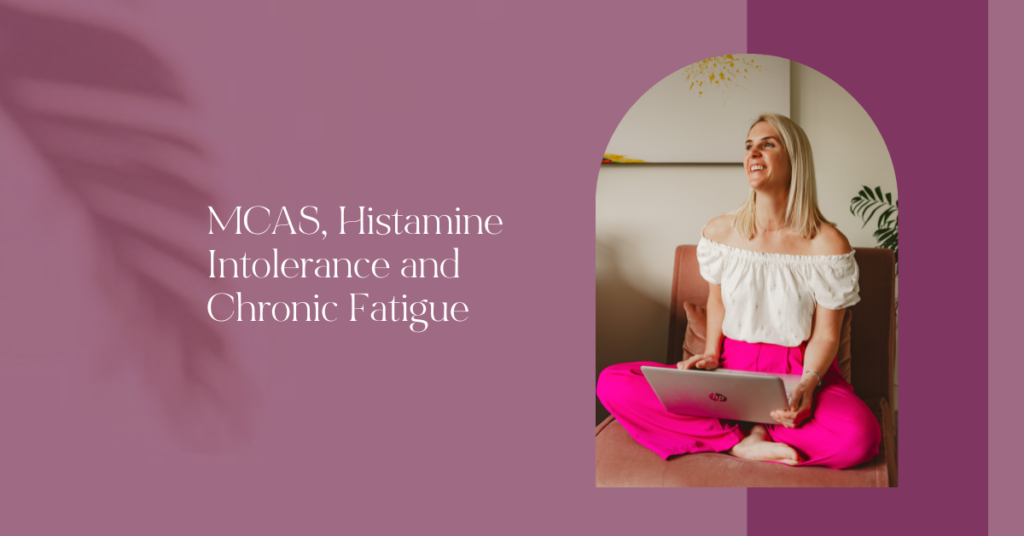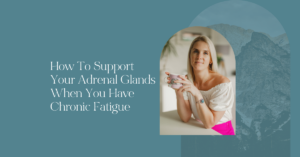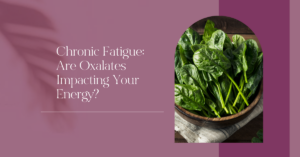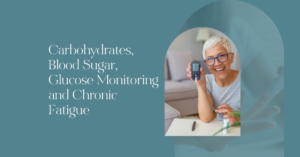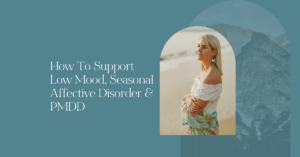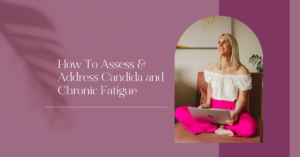Mast cell activation syndrome (MCAS) and histamine intolerance may be part of the complex web of imbalances in Chronic Fatigue Syndrome (CFS/ME) and other chronic illnesses.
MCAS can be associated with pain, cognitive dysfunction, brain fog, sensitivity to light and sound or intolerance to chemicals and smells. Many of these symptoms, and more, go hand in hand with those who experience a chronic illness.
This doesn’t mean that everyone who experiences chronic fatigue or a chronic illness will have MCAS or histamine intolerance – I personally didn’t – but it is something to consider as you work on supporting all of your body’s needs.
What are Mast Cells and Histamine?
Mast cells are a type of white blood cell that are found in connective tissues throughout the body. Typically, mast cells are located in the boundaries between the internal and external environment, they are the first line of defence at mucosal surfaces such as the lungs, digestive tract and the skin. They can also be found near blood vessels, lymph vessels and in nerves.
Mast cells, when activated, produce a variety of inflammatory molecules, one of which being histamine. Histamine is an immune signalling protein that causes allergies and swelling. It affects many different organ tissues in the body, and therefore it is not always immediately obvious that symptoms are histamine driven or mast cell driven.
What is Mast Cell Activation Syndrome?
Mast Cell Activation Syndrome (MCAS) is when mast cells become overly responsive and easily triggered and therefore, release a lot of histamine. This is usually a consequence of frequent or long term activation due to ongoing infections, allergic reactions or toxin exposure.
Constant mast cell activation across time means the mast cells may struggle to differentiate between what is “safe” and what is “unsafe” and therefore, may become highly reactive to foods, supplements, heat, exercise, smells, skin care products etc.
What is Histamine Intolerance?
Histamine intolerance is when your body cannot handle the load of histamine that has built up in your body.
This may be due to increased histamine production (from activated mast cells), a high histamine diet or ineffective breakdown of histamines.
There are 2 main enzymes that break down histamine:
- Diamine Oxidase (DAO) – which primarily breaks down histamine in the gut
- Histamine N-methyltransferase (HNMT) – which breaks down histamine outside of the gut
Because DAO breaks down histamine inside of the digestive tract, gastrointestinal inflammation can impact DAO production and therefore your ability to break down histamines. Histamine from the gut can spill over into the rest of the body and overwhelm your system leading to symptoms of histamine intolerance.
The DAO enzyme also needs certain nutrients to work effectively, these include:
- Zinc
- Vitamin B6
- Copper
- Vitamin C
HNMT is a methyl-transferase which means that healthy methylation is required for healthy HNMT function. Specifically we need to make a compound called S-Adenosyl-L-Methionine, SAMe for short, to activate HNMT. If we aren’t methylating well, we aren’t producing enough SAMe which means we aren’t activating HNMT.
Healthy methylation requires:
- Folate
- B12
- B2
- Choline
- Creatine
In summary, nutrient deficiencies, digestive imbalances, poor methylation and genetic polymorphisms (which impact enzyme activity) may contribute to poor histamine tolerance.
Common Symptoms of Mast Cell Activation Syndrome and Histamine Intolerance:
- Fatigue
- Cognitive Dysfunction
- Anxiety
- Depression
- Asthma or shortness of breath
- Digestive problems like diarrhoea and constipation
- Inflammation and swelling
- Insomnia and trouble sleeping
- Sinus issues like congestion and a runny nose
- Skin issues including hives, rashes, flushing, eczema, rosacea, itching, redness
- Allergies or allergic reactions
Symptoms which are more specific to Mast Cell Activation Syndrome:
- Autoimmune disorders
- Brain fog
- Chemical sensitivities
- Chronic infections
- Difficulty healing
- Sensitivity to light and sound
A Vicious Cycle
The unfortunate truth is the Mast Cells release histamine and once released, histamine can trigger mast cells to release more histamine. This means that very quickly, histamine and mast cell activation can become a runaway train.
Supporting the body means breaking the cycle.
But… Mast Cell Activation doesn’t always mean that you have histamine intolerance. If your body can keep up with the histamine load being produced, you can have MCAS without histamine intolerance.
Histamine intolerance without Mast Cell Activation Syndrome is another possibility; this may be the case if you don’t have overly active mast cells.
How do you tell the difference?
MCAS may be likely if…
- Reactions may happen within seconds or up to 30 minutes of being exposed to a trigger. Delayed reactions are still a possibility and obviously we need to rule out IgE allergic reactions.
- You have symptoms which impact two or more different systems at the same time e.g. your gut and skin flare after being exposed to a trigger and you experience increased fatigue and brain fog.
You may have Histamine Intolerance only if…
- You don’t have any obvious chemical sensitivities
- You feel good on a lower histamine diet
- Histamine foods seem to be your only sensitivity (i.e. you are not sensitive to light, sound, chemicals, supplements etc.)
- Reactions are usually more delayed e.g. 30 minutes+ after exposure a high histamine meal. This is because your body needs time to digest the histamine in your gut before a reaction will occur.
- You respond well to supplements like DAO
Addressing Histamine Intolerance and MCAS in Fatigue Recovery
Histamine intolerance may be successfully managed by lowering the histamine load with a lower histamine diet and possibly some supplement support like DAO. Given that DAO works inside the gut, addressing any digestive imbalance may be helpful and adding in nutrients like zinc, vitamin B6, vitamin C and copper.
Histamine intolerance is not like an IgE allergy or IgG sensitivity where foods need to be completely excluded. Instead, some histamine containing foods may be tolerated but when a certain threshold is reached, symptoms may occur.
This threshold may be different for everyone therefore the best place to start is with a very low histamine diet until symptoms stabilise. Then, gradually add in more histamine containing foods to establish your unique level of tolerance.
This level of tolerance may change over time with digestive support, nutrient cofactors and improved methylation. Personally, I like to start with dietary changes and then as the client reintroduces foods they can use DAO as a buffer when making higher histamine meal choices.
MCAS is More Complex
MCAS usually develops when an imbalance has been going on for a long time or several imbalances have stacked on top of each other. Therefore, it can take time and a little more attention to detail to unravel.
The more sensitive someone’s system has become, the more gently you will need to work and patience is required.
In the short term we can lower the histamine load by following a low histamine diet and taking supplements that may stabilise mast cells and prevent their activation, such as quercetin. We can also support methylation for HMNT and add nutrient cofactors for DAO.
Long term health will be built on the ability to remove things which are triggering the mast cells. These include:
- Toxic overload
- Mold spore colonisation and mold mycotoxins
- Heavy Metals
- Parasite infections
- Infections generally; gut infections, yeast, mold, parasites, Lyme and viral infections
- Chronic stress, trauma and nervous system dysregulation
- Hormonal imbalances
Histamine and Hormone Imbalances
Both progesterone and oestrogen may positively or negatively impact histamine. High oestrogen, often observed prior to ovulation and in the luteal phase of the cycle (post ovulation), stimulates mast cells and also downregulates the DAO enzyme which clears histamine from the body. This can create a net result of a vicious cycle of oestrogen → histamine → oestrogen → histamine.
Progesterone stabilises mast cells and up-regulates DAO, and can therefore reduce histamine. Women produce progesterone after ovulation which means that failure to ovulate or poor production of progesterone in the luteal phase of the cycle can result in oestrogen dominance. The dominance of oestrogen in the absence of progesterone will drive histamin upwards. In women, this could explain a possible cyclical nature with symptoms.
Symptoms may also be exacerbated in perimenopause when oestrogen may fluctuate from high to low and there may be anovulatory cycles.
Ensuring ovulation and stabilising hormones should be considered for those experiencing symptoms of MCAS or histamine intolerance, especially if these symptoms are cyclical. You can refer to my previous posts on “How to have better periods with CFS/ME” for more details on how you can do this. For women in perimenopause, listen to the podcast interview with Francesca Liparoti on Perimenopause and Fatigue Recovery.
If you are considering hormone replacement therapy, specifically oestrogen, consider how this will impact MCAS and histamine intolerance and work with someone who can support you.
Nervous System Support
An increase in histamine production is one of the consequences of the Cell Danger Response, the body’s universal response to threat. Threats can be a toxin or an infection, but they can also be a consequence of chronic stress and trauma. A nervous system which has become stuck in an activated state or becomes very activated very quickly (loss of vagal tone) may be associated with higher histamine production.
Therefore, learning tools to support and regulate the nervous system and free yourself from stuck survival states is part of the healing picture. It goes beyond the scope of this piece of writing to go into this in detail but you can read my blog on “How to regulate the nervous system in 6 steps”, listen to the podcast on “The Nervous System and Chronic Fatigue” or join the Nurturing Resilience Group Program.
Is this something you can test?
There are tests available that may support clinical decisions but often, symptoms and responsiveness to diet and supplements will give a lot of useful information without testing.
Testing Options
- Increase eosinophils in a Full Blood Count can suggest histamine and mast cell activation, amongst other things
- Plasma histamine levels
- Total IgE and IgE food, environment and mould testing
For identifying possible triggers:
Low Histamine Diet
A low histamine diet can be a strict diet to follow, therefore when I am working with a client I like to get some of the basics down first, most importantly blood sugar stability. Insulin can increase histamine production therefore, someone may see enough benefit just from stabilising blood sugar and may not need a strict dietary approach. Other things to consider stabilising would be:
- Nervous System
- Sleep and Circadian Rhythms
- Movement and Exercise
- Digestive Health (although if imbalances are being driven by histamine foods you may come up against a roadblock until you remove these from the diet).
Once these areas are in a stable place, if symptoms persist, a trial low histamine diet may be beneficial.
The resource that I refer clients to is: https://www.histaminintoleranz.ch/de/downloads.html
Here you can download a comprehensive list of foods to include or exclude from your diet.
The individual responses to histamine foods differ. Therefore, initially you may want to remove most of the high histamine foods from your diet and see if it makes a difference. If it helps you, then gradually add in small amounts of foods until you get a sense of what your level of tolerance is – this may also change over time as you eliminate underlying triggers.
Some foods may not be high in histamine but they may increase the liberation of histamine.
These include:
- kiwi fruit
- strawberries
- bananas
- papaya
- citrus fruits
- pineapple
- additives like carrageenan
Other facts worth noting:
- Foods like onions, blueberries and apples act as natural antihistamines.
- Drinks like caffeine and alcohol may inhibit the DAO enzyme.
- Lectins and Oxalates may be a problem for people who are very sensitive.
How long do you follow the diet for?
It depends.
If you are addressing underlying imbalances and supporting your body in the appropriate ways then you should be able to expand your capacity over time.
Supplements
Supplements that may be helpful for supporting histamine intolerance and MCAS are, in order of preference:
Quercetin would be the top supplement of choice to stabilise mast cells. There are several ways you could use it:
- Before you change your diet, add in a quercetin supplement and see if it helps on its own.
- If you trial the low histamine diet and it helps you, as you introduce higher histamine foods you could use quercetin to expand your tolerance.
- If the low histamine diet doesn’t have an impact, add in the quercetin to see if both work together.
The dosage is 2000mg – 5000mg per day, which is 4-10 capsules. Therefore:
- You could start at the highest dosage, see if it helps and then titrate down to see if you can maintain the same benefit
- OR start at the lowest dosage and titrate up to see if you notice an increasing benefit.
- The dosage may need to be adjusted if exposure to triggers increase e.g. seasonal allergies or changes in diet
Final Words
Working with histamine intolerance and even more so MCAS can be complicated, especially if there are several triggers and supplement sensitivities. Therefore it is best to work with a practitioner who can support you and direct along the way.

